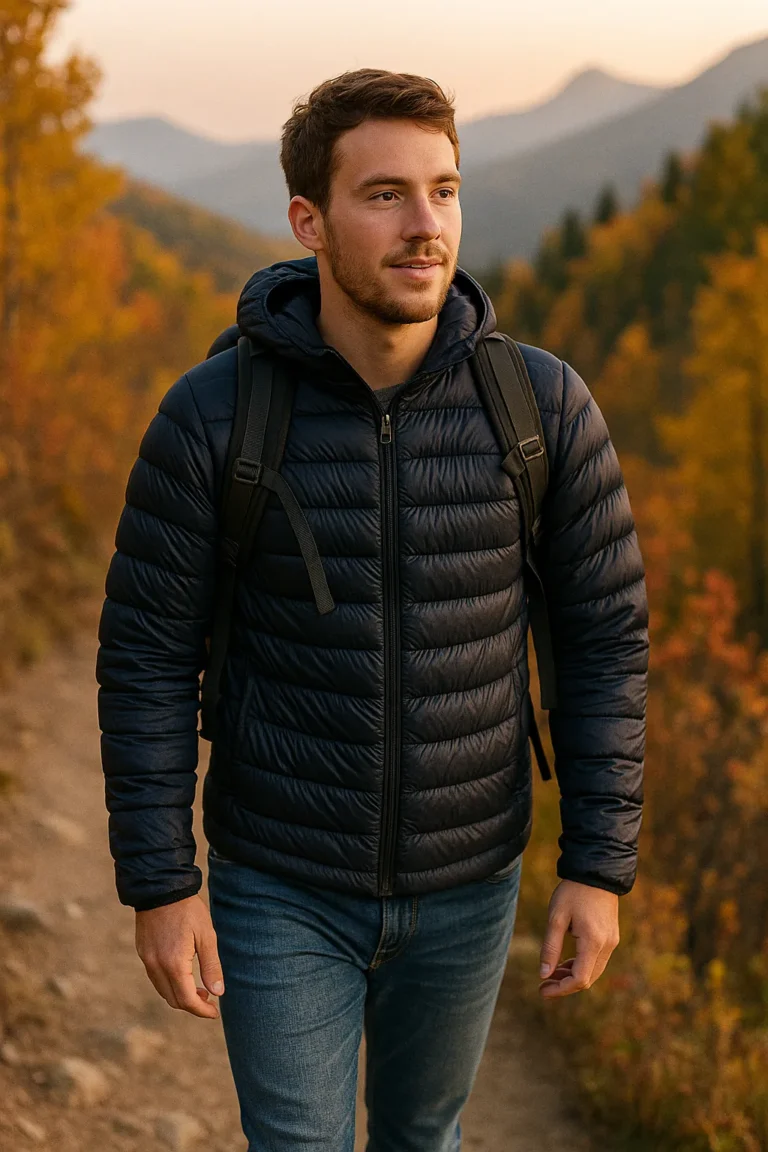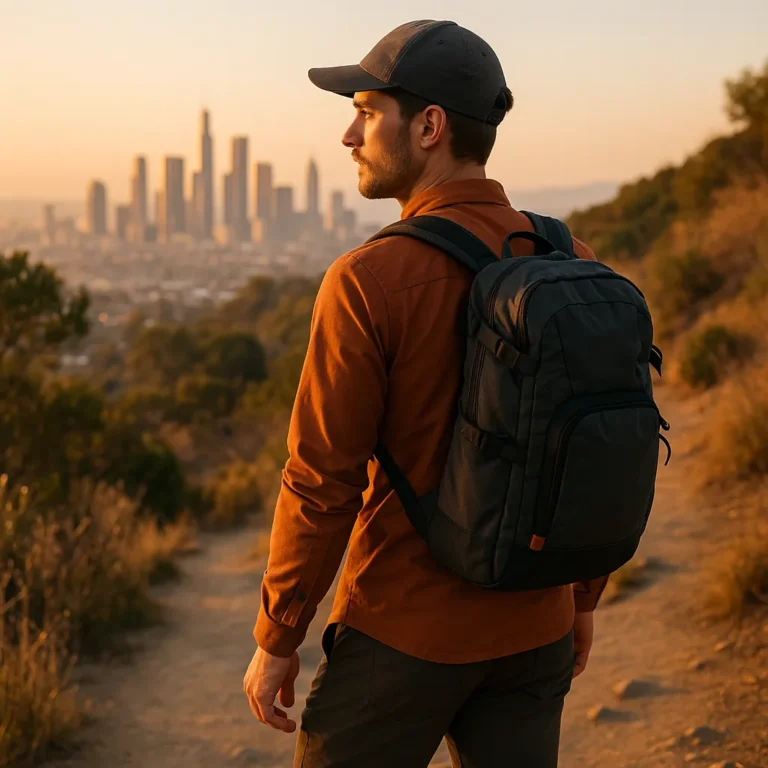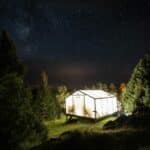Category: Gear | Type: Top Picks | Focus Keyword: campfire grill grates backpacking | Time: 5 m
Last updated: April 2025
Introduction: Cook Over Fire, Not Just Boil Water
Sure, ultralight stoves are efficient. But nothing beats cooking over a real campfire. Whether you’re searing freshly caught trout, grilling seasonal veggies, or just heating tortillas, a good campfire grill grate for backpacking lets you transform a few logs into a backcountry kitchen that rivals home cooking.
This guide covers the best lightweight grill grates for backpacking in 2025, with all picks under 2 lbs, packable, and tough enough for real fire conditions. We’ve analyzed weight, size, packability, and actual fire performance based on real hiker reviews and our extensive backcountry testing.
Looking for more essential gear? Check out our guide to Best Camping Flashlights with Long Battery Life (2025) to complete your campsite setup.
Quick Comparison Table: Best Backpacking Campfire Grates
| Product Name | Weight | Dimensions | Material | Foldable | Price Category | Best For |
|---|---|---|---|---|---|---|
| UCO Flatpack Grill Small | 1.75 lbs | 9.25″ x 6.75″ | Stainless steel | Yes | $$ | Multipurpose (grill + firepit) |
| Boundless Voyage Ti Grate | 5.4 oz | 10.5″ x 5.5″ | Titanium | No | $$$ | Ultralight open-flame grill |
| Grilliput Duo | 1.0 lbs | 10″ x 9.3″ | Stainless steel | Yes | $$ | Compact kit with stand |
| Stansport Folding Grate | 1.9 lbs | 13″ x 9″ | Steel | Yes | $ | Budget basecamp grill |
| Daggerfish Flat Grill | 9 oz | 9.5″ x 6″ | Stainless steel | No | $$ | Minimalist solo grilling |
Top 5 Campfire Grill Grates for Backpacking
1. UCO Flatpack Grill (Small)
This portable campfire grill and fire pit combo folds completely flat and pops open in seconds. Great for grilling or using as a mini fire container in areas with restrictions on ground fires.
Pros:
- Folds flat to just 1.5″ thick for easy packing
- Includes both grate and fire containment tray
- Durable stainless steel construction resists warping
- Quick setup, packs clean without soot transfer to gear
- Elevates food at perfect height above flames
Cons:
- A bit bulky for ultralight packs at 1.75 lbs
- Limited cooking surface for groups larger than two
- Premium price point compared to basic grates
Use Case: Solo or duo backpackers who want the convenience of both a grill and contained fire system in one package
Price Category: $$
2. Boundless Voyage Titanium Grill Grate
At just 5.4 oz, this titanium backpacking grill is ideal for ultralight hikers and thru-hikers who still want to cook fish, meat, or flatbreads over an open flame without weight penalties.
Pros:
- Featherlight and nearly indestructible titanium construction
- Resists corrosion and warping even with repeated flame exposure
- Great for simple open-fire grilling in wilderness settings
- Can rest on rocks or logs for stable cooking platform
- Perfect size for individual meals
Cons:
- No integrated legs or stand requires improvised support
- Hot to handle during and after cooking—bring heat-resistant gloves
- Premium price reflects titanium material cost
Use Case: Fastpackers, thru-hikers, and minimalist backcountry setups where every ounce matters
Price Category: $$$
3. Grilliput Duo Portable Grill
This innovative stainless steel campfire grill assembles from a small tube into a stable stand-alone cooking surface. It’s compact, strong, and easy to clean after wilderness meals.
Pros:
- Packs into compact 11″ x 1″ tube that disappears in your pack
- Has integrated legs for stability over various fire configurations
- Great for grilling burgers, fish, or supporting a small skillet
- Includes protective carry tube to keep soot contained
- Modular design allows for different height adjustments
Cons:
- Assembly takes approximately 2–3 minutes
- Grill bars are spaced widely—small food items can fall through
- Requires flat surface for optimal stability
Use Case: Weekend backpackers who want a reliable, stand-alone campfire grill without improvisation
Price Category: $$
4. Stansport Folding Backpack Grill
The budget pick for backpackers who don’t want to stress over soot or scratches. This folding grill is simple, reliable, and gets the job done without breaking the bank.
Pros:
- Strong steel build handles heavy cookware
- Foldable legs provide perfect elevation over campfire
- Affordable and easy to replace if damaged
- Can hold pots or cast iron cookware for versatile meal options
- Wide cooking surface accommodates multiple items
Cons:
- Heaviest option on this list at 1.9 lbs
- Steel coating can wear over time with high heat exposure
- Bulkier when folded than premium alternatives
Use Case: Weekend backpacking trips, beginner setups, and budget-conscious outdoor cooks
Price Category: $
5. Daggerfish Flat Grill
Minimalist and lightweight, this stainless steel backpacking grill is optimized for cooking small food items over direct flame—perfect for sausages, skewers, or quick-heating tortillas.
Pros:
- Compact, ultralight design at just 9 oz
- Simple to use—rest on rocks or existing fire ring
- High-quality stainless steel resists rust and corrosion
- 100% USA-made with premium materials
- Thin profile takes minimal pack space
Cons:
- No support legs requires creative positioning
- Smaller cooking surface limits meal size
- Requires careful handling when hot
Use Case: Solo hikers or as an emergency grill backup for lightweight trips
Price Category: $$
For complete campsite cooking, pair your grill with one of our 7 Best Firestarters for Camping to ensure reliable fire starting in any conditions.
How to Choose a Backpacking Grill Grate
1. Weight Considerations
- Under 1 lb: Ideal for thru-hikers and ultralight backpackers
- 1–2 lbs: Better for weekend trips or basecamp use where comfort outweighs weight
- Consider your total pack weight: A grill grate should represent no more than 2-3% of your total load
2. Cooking Surface Area
- 9″ x 6″: Perfect for solo use or cooking in stages
- 10″ x 9″ or larger: Suitable for 2+ people cooking simultaneously
- Larger surface area = more weight and bulk: Find your personal balance
3. Packability Features
- Flat-folding designs: Easiest to slip into tight pack spaces alongside other flat items
- Tube-packed options: More compact overall but less convenient to assemble in field
- Fixed grates: Best for simplicity but harder to pack efficiently
- Consider where in your pack it will go: Side pocket, top lid, or main compartment?
4. Stability Over Fire
- Integrated legs: Better for uneven terrain and consistent cooking height
- Flat grates: Lighter but require rocks, logs, or existing fire rings for support
- Consider wind conditions: Lower profile grates are less affected by gusts
5. Material Selection
- Titanium: Ultralight (40-60% lighter than steel), corrosion-proof, but expensive
- Stainless steel: Rugged, affordable, somewhat heavier but excellent value
- Regular steel: Heaviest option but budget-friendly and durable
- Avoid aluminum: It warps under high heat and can potentially contaminate food
Real-World Use Cases from Experienced Backpackers
- Desert Southwest overnighter: Boundless Voyage titanium grate used to roast freshly caught trout and heat tortillas, rested on natural stone fire ring
- Three-day group camp in Olympic National Forest: UCO Flatpack served as both fire pit and grill, accommodating meals for four hikers
- Budget Appalachian Trail section hike: Stansport grate handled both a coffee pot and bacon grilling without sagging under weight
- Pacific Crest Trail thru-hike: Daggerfish carried as a fire-cooking option on minimal food resupply stretches
- Hybrid van/hiking trip in Colorado: Grilliput Duo packed efficiently into cook kit tube, worked for both roadside and trail meals
Maintenance and Care for Backcountry Grill Grates
Proper care extends the life of your backpacking grill and keeps it cooking-ready:
- Field cleaning: Scrape with stick while hot, then wipe with damp bandana
- Prevent rust: Ensure grate is completely dry before packing
- Home maintenance: Deep clean with vinegar solution to remove stubborn soot
- Storage: Keep in breathable bag, not sealed plastic
- Pre-trip check: Inspect for bent components or weakened joints
Cooking Tips for Campfire Grill Success
- Let your fire mature: Cook over glowing coals, not active flames
- Create heat zones: Position part of grate over intense heat, part over moderate
- Oil prevention: Lightly oil grate before cooking to prevent sticking
- Emergency supports: Learn to use stones or green sticks if you forget your grate
- Safety first: Always have water nearby for flame control
Conclusion: Fire-Cooked Meals for Weight-Conscious Backpackers
Whether you’re slow-grilling a prime steak or just toasting sourdough over morning coals, these campfire grill grates for backpacking open up serious trail cooking options—without adding serious weight to your pack. It’s time to elevate your backcountry cuisine beyond freeze-dried meals (or at least eat them with fresh grilled bread).
The right lightweight grill transforms any legal campfire into a cooking station that rivals home kitchens, creating memorable meals that connect you more deeply with the wilderness experience. Your choice comes down to your priorities: weight, cooking style, and budget.
FAQ: Backpacking Campfire Grates
Q1: Can I put a backpacking grill grate directly on a campfire?
Yes—but ensure it’s heat-safe stainless steel or titanium. Avoid plastic-coated metals which can release toxins. Position your grate after flames have died down to cooking coals for best results.
Q2: Do I need legs or stands for my backpacking grill?
Not always. You can rest flat grates on rocks, logs, or existing fire rings. However, legs provide consistent height and better stability, especially on uneven ground.
Q3: How do I clean my grill grate in the backcountry?
Scrape with a rock or metal utensil while still warm. Wipe with a damp cloth. For deeper cleaning back home, use vinegar or baking soda solution to remove residue.
Q4: Are portable grill grates allowed in national parks and wilderness areas?
Yes—but always check local fire rules first. In some areas, you may only use fire pits or pre-approved contained cooking systems. Remember that fire bans typically include all open flame cooking.
Q5: Can I use backpacking grill grates with a camp stove?
Some grates (like Stansport or UCO) can support cookware above a stove flame for diffusing heat or holding multiple items, but this isn’t their primary purpose. Ensure adequate clearance between flame and grate.
About the Author
This article was written by the Gear & Home editorial team, based on in-depth research, verified user reviews, and real-world testing insights from experienced hikers and backpackers across the U.S.
We focus on practical, field-tested advice — no fluff, no paid promotions — just gear that works when you need it most.
If you’re planning to pack a grill grate for your next adventure, make sure you also know How to Pack a Backpack: The Ultimate Guide for Hikers & Campers to integrate your cooking gear efficiently.








